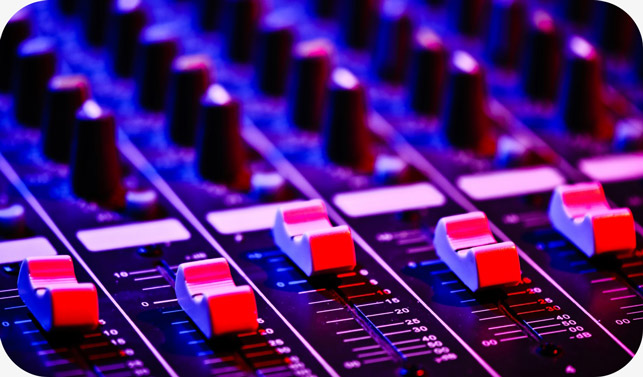AUDIO MASTERING FOR VINYL

FIRST OF ALL, THE QUALITY SOUND OF YOUR VINYL DEPENDS ON THE MASTERING, SO PLEASE FOLLOW THESE RULES AS EXPLAINED BELOW:
1. Formats
2. Bit rate , headroom e compression
3. Sampling rate & frequency range
4. De- essing
5. Stereo fields & frequencies levels
6. Stimated side lengths & volume level
7. Fadings and spirals
- File formats we work with are WAV, AIFF, FLAC (lossless). Please avoid lossy compressed data or any forms of transcoded files (mp3, mp4, wma, etc.). Audio-CDs are also not recommended, as they offer no CRC check. Please use data CDs or send files as indicated.
- Bit rate: 16 bit works, 24 is optimum (recommended), 32 is quite redundant. Please look for headroom on your recordings. If not strictly artistically important, don‘t go higher than -12 dB RMS in loudness. On every master above this mark we cannot guarantee a cut, pressing and playback result without distortions.
- Sampling rate has to be 44100 Hz or higher. The frequency range of a record is at least 25 to 18.000 Hz. Nevertheless, we highly recommend not to cut frequencies under 40 Hz and up 15.000 Hz at hot levels, because they can lead to unwanted distortions and artefacts due to tracing failures. This process also depends on the radius where the music is picked up: the closer the playback reaches the inner diameters, the slower the needle runs through the grooves, the lower may be the possibility of quality playback at the high end. So to speak, the frequency response of a vinyl record is permanently changing while playback. We recommend not to cut too close to the inner diameters for a perfect result, especially on 33 RPM. Further, it helps to cut material with a sensible high-end on the outer diameters, at the beginning of a record‘s side.
- We recommend to use de-essers on vocal tracks with a lot of sibilance, because they may produce bursts of high frequencies leading to distortions both while cutting and when the needle runs through the grooves. You may use a de-esser on a mixed master, but it is more recommended to apply it during the mixing process for a much more transparent and valiant result.
- The stereo information (side signal in MS coding) should be 6dB lower than the mono information (mid signal in MS coding). The stereo field should never be louder than half of the mono level. For very loud cuts we recommend a distance of at least 9 dB (between mono and stereo signal), that is useful to avoid tracing problems. Moreover, it is not recommended to work with any stereo signals below 200 Hz. Correlation not above 90° for LPs, not above 60° for loud maxi single cuts.
- Play times per side: The levels of the cutting depends primarily on the running length of the audio mastering. Every groove needs its space, and loud bass grooves take the most of the space, followed up by a wide stereo signal. The louder you want the cut, the less space you‘ve got, the shorter the sides have to be. And vice versa, lower cuts offer more space and so playtime per side.
In the following lines, the estimated side lengths, depending on cutting level, for 12“es:
- maximum levels, approx +6 dB: 6 min at 45 RPM, 8 min at 33 RPM
- sufficient levels, approx +4 dB: 8 min at 45 RPM, 11 min at 33 RPM
- maximum recommended level for Djs, approx 0 dB: 11 min at 45 RPM, 15 min at 33 RPM
- maximum playtime on vinyl for an decent result, approx -6 dB and lower: 18 min at 45 RPM, 22 min at 33 RPM
The playtime can be longer, but it relevant problems of noises and crackles in the music‘s low parts can appear. For this reason, we don‘t recommend to exceed the 24 minutes per side.
- Please set your fadings carefully and apply the material with the exact pauses you want to have on the vinyl.
Vinyl mastering guidelines PDF download